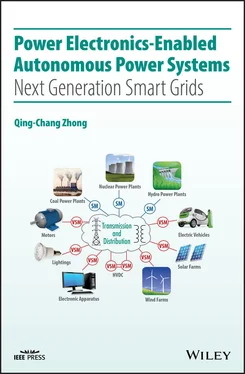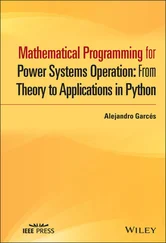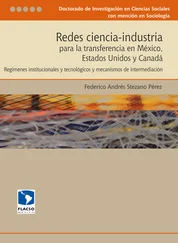He is truly globalized. Before moving to Chicago, he spent about 14 years in the UK, as Research Associate at Imperial College London, Senior Lecturer at University of Glamorgan and University of Liverpool, Chair Professor in Control Engineering at Loughborough University, and Chair Professor in Control and Systems Engineering at The University of Sheffield, and one year in Israel at Technion – Israel Institute of Technology as a postdoctoral researcher. He has delivered 200+ invited talks in 20+ countries, including delivering a semiplenary talk on SYNDEM smart grids at the 20th IFAC World Congress, which is the world's largest conference in control and systems engineering.
He served on the Steering Committee of IEEE Smart Grid and is a Vice‐Chair of IFAC TC on Power and Energy Systems. He was a Senior Research Fellow of the Royal Academy of Engineering/Leverhulme Trust, UK and the UK Representative to the European Control Association. He served as an Associate Editor for IEEE Transactions on Automatic Control , IEEE Transactions on Power Electronics , IEEE Transactions on Industrial Electronics , IEEE Transactions on Control Systems Technology , IEEE Journal of Emerging and Selected Topics in Power Electronics , IEEE Access , and European Journal of Control .
Here is a version written by Keith Schneider, a New York Times correspondent since 1982.
Zhong did not advance to the uppermost echelons of global energy innovation by privilege of birth or happy accident. Raised in a rural area of Sichuan, China, his family was poor. His prospects for attending a university were slim. For this reason, his family sent him to a technical secondary school in Xiangtan instead of high school. Having his trajectory pointed in that direction for him, his chances of getting a college education were practically zero.
During the technical school, though, Zhong excelled and was promoted to attend college level courses. After graduation, he began his career as a technician. He soon started his first entrepreneurial endeavor by filing for a patent in 1991. Zhong successfully commercialized it – manufactured and sold 120 units quickly. The invention stirred enough market interest that the radio station of Xiangtan City promoted the product for one month for free.
Zhong realized that he could achieve even more than he thought and developed these six words as his mantra. Control yourself. Challenge yourself. Excel yourself .
In 1994, Zhong returned to university to study for a master's degree. One of the entrance requirements was passing a national exam that included knowledge of English. His first foreign language was Japanese, so learning English was nearly Mission Impossible. He tried unsuccessfully to find an English tutor, but in the end he taught himself. He mastered the language portion and was admitted to Hunan University, the best university in the province, with the highest total score among all applicants to the university that year.
In 1997, Zhong temporarily left his wife, Sue, and his one‐year‐old daughter in Hunan and went to Shanghai to earn a PhD degree. After receiving his doctorate in 2000, Dr. Zhong went to Israel for a postdoctoral position. This time, he was accompanied by his family.
After completing the contract in Israel, the Zhongs moved to England for a second postdoctoral position at Imperial College London. Dr. Zhong envisioned becoming a full professor in 10 years. In order to accomplish that goal he studied at night for a second PhD degree while working as a postdoctoral researcher by day. Nine years later, Dr. Zhong was appointed to Chair Professor in Control Engineering at Loughborough University. Just as important is what occurred two years ago. He made a breakthrough in his research and invented the synchronverter, the first‐generation virtual synchronous machine. He knew this was revolutionary. While advancing the research, including building a $5 million lab at The University of Sheffield, he started exploring various ways for commercialization.
Dr. Zhong eventually realized that the best way to achieve his vision is to operate at a global stage. After nearly 14 years of work in the UK, he decided to move one more time, this time to the US. He was recruited to Chicago, a global hub, where he assumed Max McGraw Endowed Chair Professor at Illinois Institute of Technology.
After settling down, Dr. Zhong founded Syndem LLC in 2017. The company focuses on developing virtual synchronous machines to accelerate large‐scale adoption of distributed energy resources and to make power systems autonomous without relying on communication networks. Within one year, Dr. Zhong accomplished the rare – almost impossible – task of leading his team to nearly break even in their first year while launching two products and securing contracted revenue for another year of operation.
Dr. Zhong lives in a Chicago suburb with Sue, herself an engineer, and their two daughters. The older one, Rui, works for a top investment bank in the green technology sector and is an accomplished visual artist. The younger, Lisa, is an energetic reader, dancer, and gymnast, eagerly awaiting attending high school. She read over 800 books in 2018.
Chapter 1 Introduction
1.1 Motivation and Purpose
Electrification is the greatest engineering achievement of the 20th century (NAE 2000) and the power system is regarded as the largest and most complex machine engineered by humankind (Kundur 1994). Power systems are arguably the most important infrastructure that underpins social life and economic growth because “energy regimes shape the nature of civilizations –how they are organized, how the fruits of commerce and trade are distributed, how political power is exercised, and how social relations are conducted” (Rifkin 2011).
The generation of electricity has been dominated by large centralized facilities that burn fossil fuels, such as coal, oil, and gas. While fossil fuels have greatly contributed to the world's civilization, two challenging consequences are emerging: one is that fossil fuels are not sustainable and the other is that the combustion of fossil fuels emits greenhouse gases, which is a major cause for climate change – one of today's most pressing global challenges (Hutt 2016). The large‐scale adoption of renewable distributed energy resources (DERs) has been widely accepted as a promising means to tackle these two challenges. The United Nations have put the Paris Agreement into force to reduce greenhouse gas emissions (UN 2018) and many countries have set strategic plans to utilize renewable energy and make a transition to a low‐carbon economy. For example, France and the UK plan to close all coal plants by 2023 (England 2016) and 2025 (Vaughan 2018), respectively. Many states in the US, including Hawaii, California, and New York, have decided to generate 100% carbon‐free electricity by around 2050. As a result, the number of DER units is rapidly growing and could easily reach millions, even hundreds of millions, in a power system. This is often referred to as the democratization of power systems (Farrell 2011). Integrating a small number of DERs into the grid is not a problem, but integrating millions of DERs into the grid brings unprecedented challenges to grid stability, reliability, security, and resiliency (Zhong and Hornik 2013). For example, it has been reported that Hawaii's solar push strains the grid (Fairley 2015) and renewable energy could leave you mired in blackouts (Brewer 2014). Fundamentally speaking, this is less of a power problem but more of a systems problem.
Adding an ICT system into the power system, hence the birth of the smart grid, has emerged as a potential solution to make power systems more efficient, more resilient to threats, and friendlier to the environment (Amin 2008; Amin and Wollenberg 2005). However, this could also lead to serious reliability concerns (Eder‐Neuhauser et al. 2016; Overman et al. 2011). If the ICT system breaks down then the whole power system could crash. On 1 April 2019, a computer outage of Aerodata caused 3000+ flight cancellations or delays, affecting all major US airlines including Southwest, American, Delta, United, Alaska, and JetBlue (Gatlan 2019). This sends a clear warning signal to the power industry: ICT systems may become a single point of failure for power systems and similar system‐wide outages could happen to power systems if their operation relies on ICT infrastructure. Moreover, when the number of players reaches a certain level, how to manage the ICT system is itself a challenge. What is even worse is that adding ICT systems to power systems opens the door for cyber‐attacks by anybody, at any time, from anywhere. On 23 December 2015, hackers compromised the ICT systems of three energy distribution companies in Ukraine and temporarily disrupted the electricity supply to approximately 225,000 customers (Lee et al. 2016). There are numerous reports about cyber‐attacks to power systems (Carroll 2019) and, on 15 June 2019, The New York Times reported that US Escalates Online Attacks on Russia's Power Grid (Sanger and Perlroth 2019). There are certainly issues beyond engineering and technologies but the reliance of power system operation on ICT systems has become a fundamental systemic flaw. It is the responsibility of engineers to correct this systemic flaw and make power systems secure and reliable. Actually, there is no other choice left. On 27 June 2019, the US Senate passed a bipartisan bill, the Securing Energy Infrastructure Act , with the aim of removing vulnerabilities that could allow hackers to access the energy grid. There is a pressing demand to correct this systemic flaw and avoid potential cyber‐attacks.
Читать дальше












